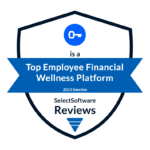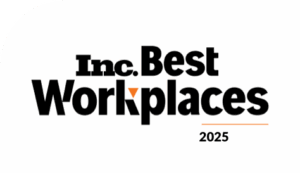As a benefits leader, you’re in the business of expecting the best from people. But, as the saying goes: Expect the best, and prepare for the worst.
During benefits buying season, that means getting prepared for the rock would-be point solutions vendors don’t want you to look under: where they have conflicts of interest with your employees. And how those conflicts ultimately harm your people.
To prepare for those conflicts, you need to arm yourself with information. Namely, the most common undetected ways that conflicts of interest hurt your employees. And, as a consequence, either fail to drive your ROI or actually drive negative ROI.
Hidden issue #1: Making it easy to make the wrong financial decisions
When a vendor makes a profit margin based on product usage, it’s easy to see that they have an incentive to increase the price. And benefits leaders are great at using their bargaining power to fight for employees to pay fair prices.
But point solutions are often able to manipulate small but powerful details of their user experiences in a way that pushes the employees to make choices that are in the point solution’s best interest.
Unfortunately the point solution’s interest is often directly at odds with what’s best for the employee. For example, they may push employees to take out more or bigger loans that ultimately compromise their financial health, or advise a “one-off” action that appears harmless, but doesn’t fall in line with the employee’s holistic financial situation.
Hidden issue #2: Failing to point the client to a better option
Humans are naturally inclined to notice something someone did, and not what someone didn’t do. That’s why it can be easy to spot a point solution that’s trying to unfairly increase prices but tougher to see them failing to point to a cheaper, better option.
Here’s how this could happen for a loan or cash advance point solution provider. An employee contacts the point solution with an emergency. The worst of the point solutions will push a loan or cash advance no matter what.
But some point solutions will do a bit more—and that can be even more difficult to guard against. For example, they may put certain rules in place, like a formula to determine who they will offer their product to. For example, they may offer a costly wage advance only up to a certain percentage of a paycheck. On the surface, these rules can seem like enough. Sadly, they still leave employees exposed to getting quite harmful guidance.
Why is that? Because the key is to compare the option to the best thing the employee could have done. An employee who could call on free resources from their community or another benefit you provide is almost never better off taking a loan instead.
These aren’t the only ways a point solution can harm your employees. As we mentioned, point solutions have incentives to increase prices for your employees. And there are additional hidden issues. For example, point solutions have incentives to shift their fees into less transparent areas like late fees and penalties. But the big two issues above are the ones to know by heart.
The good news for employers is there is another way. You can select a financial wellness solution that does not specialize in one product, and doesn’t make money on pushing more of that product.
At Brightside, we’re building a new category of financial wellness called Financial Care. We deliver high ROI to employers by improving your employee’s financial health. Unlike point solutions, we offer real solutions that are 100% unbiased. We never make money off of products.
Instead of making it easy to buy products, we make it easy to make smart financial decisions.
Instead of pointing to one product, we hustle to find the best solution available to your employee.
Learn more about how Brightside Financial Care offers a trusted, unbiased alternative to harmful point solutions and ineffective financial wellness programs.





